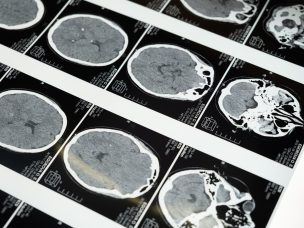Neuromyelitis Optica Spectrum Disorder
Neuropathic Pain Factors in Neuromyelitis Optica Spectrum Disorder Patients
Depression and initial spinal cord involvement are among the factors associated with neuropathic pain in patients diagnosed with neuromyelitis optical spectrum disorders. Neuromyelitis optica spectrum disorder (NMOSD) is an autoimmune inflammatory disorder with severe demyelination, especially of the optic nerve, brain, and spinal cord. Neuropathic pain is a common yet underrecognized symptom of NMOSD. The...
Inebilizumab for Treating Neuromyelitis Optical Spectrum Disorder
Inebilizumab therapy was determined to be effective for patients with prior exposure to rituximab; however, the majority of these patients experienced infections, increasing the need for vigilance. Neuromyelitis optica spectrum disorder (NMOSD) is a chronic and rare autoimmune inflammatory disorder affecting the central nervous system (CNS). NMOSD is characterized by repeated attacks of transverse myelitis,...
Relationship Between Life Quality and Disability Progression in NMOSD Patients
The quality of life of NMOSD patients corresponds to their degree of disability and can be improved with early interventions for preventing relapse. Neuromyelitis optical spectrum disorder (NMOSD) is a rare autoimmune disorder involving the spinal cord and optic nerves. There is a consistent and strong association between the quality of life (QoL) and disability...
Therapeutic Perspectives on Neuromyelitis Optica Spectrum Disorder
Therapeutic strategies for neuromyelitis optica spectrum disorder target pathogenic mechanisms of the disease and aim to restore the blood–brain barrier and enhance immune tolerance. Potential therapeutic strategies for neuromyelitis optica spectrum disorder (NMOSD) are based on targeting the B cell complement cascade system, and IL-6R. These strategies include restoration of the blood–brain barrier (BBB) and...
Elevated dsDNA in Patients with NMOSD
The role of dsDNA in the cerebrospinal fluid of patients with NMOSD is not fully understood, but researchers have found that the levels are higher in this population. Neuromyelitis optica spectrum disorder (NMOSD) causes inflammation in the central nervous system and results in severe myelitis and optic neuritis. Double-stranded DNA (dsDNA) has been found to...
Brain Age Gap in NMOSD Patients Compared to Healthy Controls
Machine learning-based brain age calculations were found to be significantly predictive biomarkers in patients with NMOSD and RRMS. Neuroimaging-based “brain age” is a commonly used biomarker for quantifying the progress of both brain disease and aging [1]. Biological brain age is usually estimated by using various approaches for interpreting magnetic resonance imaging (MRI) data. There...
Comparing Rituximab Efficacy in Patients with NMOSD and MOGAD
Rituximab shows promising effects in patients with NMOSD, but is less effective in patients with MOGAD. The efficacy of rituximab in patients with myelin oligodendrocyte glycoprotein antibody-associated disorders (MOGADs) is not fully understood but has been shown to be relatively greater for aquaporin-4-IgG-positive neuromyelitis optica spectrum disorders (AQP4-IgG+NMOSDs). This study, published in the Journal of...
Non-Immune Comorbidities in Patients With NMOSD
Patients with NMOSD who have non-immune-related comorbidities face unique challenges in their treatment. This study examined their demographics and risk factors. Among patients with neuromyelitis optica spectrum disorders (NMOSD), those with comorbidities may have unique clinical features, prognoses, and treatment outcomes. Comorbidities may affect various systems of the body, and this study, published in the...
The Efficacy of Contemporary NMOSD Treatments Over Time
This study provides a longitudinal analysis of NMOSD outcomes using modern treatment methods and finds more promising results than past studies have shown. Even in patients who undergo immunosuppressive or immunomodulatory therapy, neuromyelitis optica spectrum disorder (NMOSD) tends to follow a progressive disease course with step-wise accumulation of disability over time. The influence of aquaporin-4...
More Medical News














